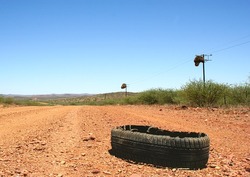Hot weather can significantly impact tire performance and increase the risk of having a blowout. Considering the effect of increased temperatures on tire stability and taking the time to adjust pressure and vehicle load can reduce the possibility of a blowout.
Understanding the Science
Air molecules vibrate and expandwhen they are hot. When a vehicle travels down the road, the friction between the road surface and the tire creates additional heat which can accelerate the process. If the psi within the tire exceeds the tire’s design specifications, this can cause the tire to explode and cause a blowout. Further, the tire may bulge which can impact handling characteristics and braking capabilities. Both situations can be dangerous even at low-travel speeds as even slight bumps in the road can push the tire beyond its design limits and cause an automobile accident.
Taking Precautions
Drivers can take precautions to reduce the potential for blowouts in hot weather conditions. Tire safety in hot weather starts with checking to ensure the tires are not over-inflated. Tire pressure increases between 1-2 psi per every ten degrees of temperature and tires should be checked during the hottest part of the day. Visual inspection is not enough and a high-quality gauge should be used when the weather is hot to determine the accurate psi within the tire.
In high temperatures, drivers should avoid overloading their vehicle. Further, drivers should carefully inspect the tread to determine if the tire is wearing unevenly. Tires that have excessive wear or “bare” spots should be replaced as soon as possible. Finally, drivers should avoid speeding when the weather is hot as the weather can negatively affect the tire’s handling characteristics. In turn, this can make it possible for the driver to lose control over the vehicle’s direction of travel.
Drivers who are taking a road trip should plan to stop and check their tire pressure every 2 hours until the hot weather subsides. If the tires are at or near their maximum psi rating, the tires should be allowed to “cool off” before driving recommences. It is not advisable to let the excess air out as when the tires cool off, they could be under-inflated.


